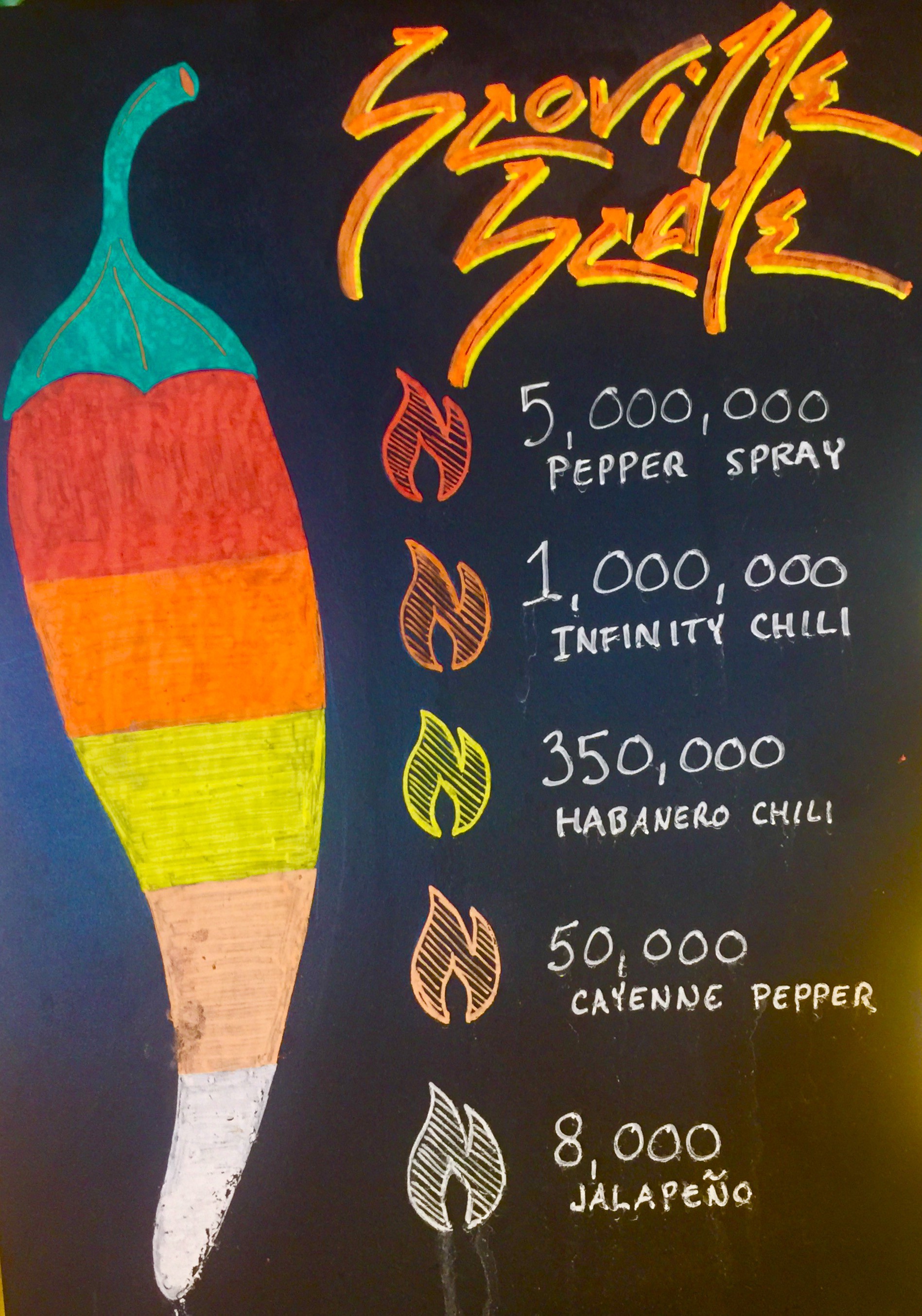
The Scoville scale is a measurement of the pungency (spicy heat) of chili peppers or other spicy foods as reported in Scoville heat units (SHU). When the scoville scale was first developed, it was a subjective measurement dependent on the capsaicin sensitivity of testers and so is not a precise or accurate method to measure capsaicinoid concentration.
While working for the Parke Davis Pharmaceutical Company in 1912, American chemist Wilbur Scoville devised a test for rating the pungency of chile peppers. In his method, an exact weight of dried pepper is dissolved in alcohol to extract the heat components (capsaicinoids), then diluted in a solution of sugar water. Decreasing concentrations of the extracted capsinoids are given to a panel of five trained tasters, until a majority can no longer detect the heat in a dilution. The heat level is based on this dilution, rated in multiples of 100 SHU.
Wilbur Scoville tried many different methods and variations to measure the pungency of peppers, but he found that the readings were not consistent and precise. For decades the Scoville Scale was the accepted way of measuring the amount of capsaicin in peppers.
Since the 1970s, a peppers heat is now measured by the Gillett Method which uses High Performance Liquid Chromatography. This is a more accurate method and directly measures capsaicinoids. It attempts to relate the measured concentration in parts per million (ppm) to the Scoville scale using a mathematical conversion factor of 15, 20 or 30 depending on the capsaicinoid.
First We Feast has a YouTube show, Hot Ones, were you can watch the effects that different hot sauces measured on the scoville scale have on celebrities as they are asked questions.


